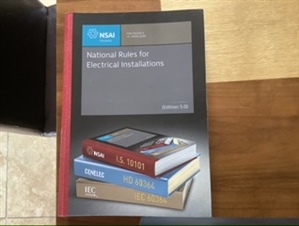I have a friend who has bought a house in France and would like me to come over and check the electrics. Testing is the same anywhere so I can do that part.....
Does anyone have a copy of the regs for France - in English - that they could possibly share with me? Does an English translation of the French Regs exist?
I have also carried out small works in offices in Berlin, Germany - does an English translation of their regs exist? There's a reasonable hope that I might get to go back there at some point.
What are the Southern Irish Regs called please (We've done small works and lots of data in an office in Dublin) and is it any different to the northern Irish Regs? Certainly the techniques used in Dublin seem quite different to ours - and more European - than British. Clearly I can buy my own copy of these regs if I needed them as they are already in English, but I'm unlikely to use them - so if anyone could send me a copy I'd appreciate it - but its merely accedemic and out of interest to compare what I saw with regs. I know I posted on this subject before but I did not ask if any one has a copy of the regs and I did not ask about France.
Kind Regards
Tatty

 Y
Y